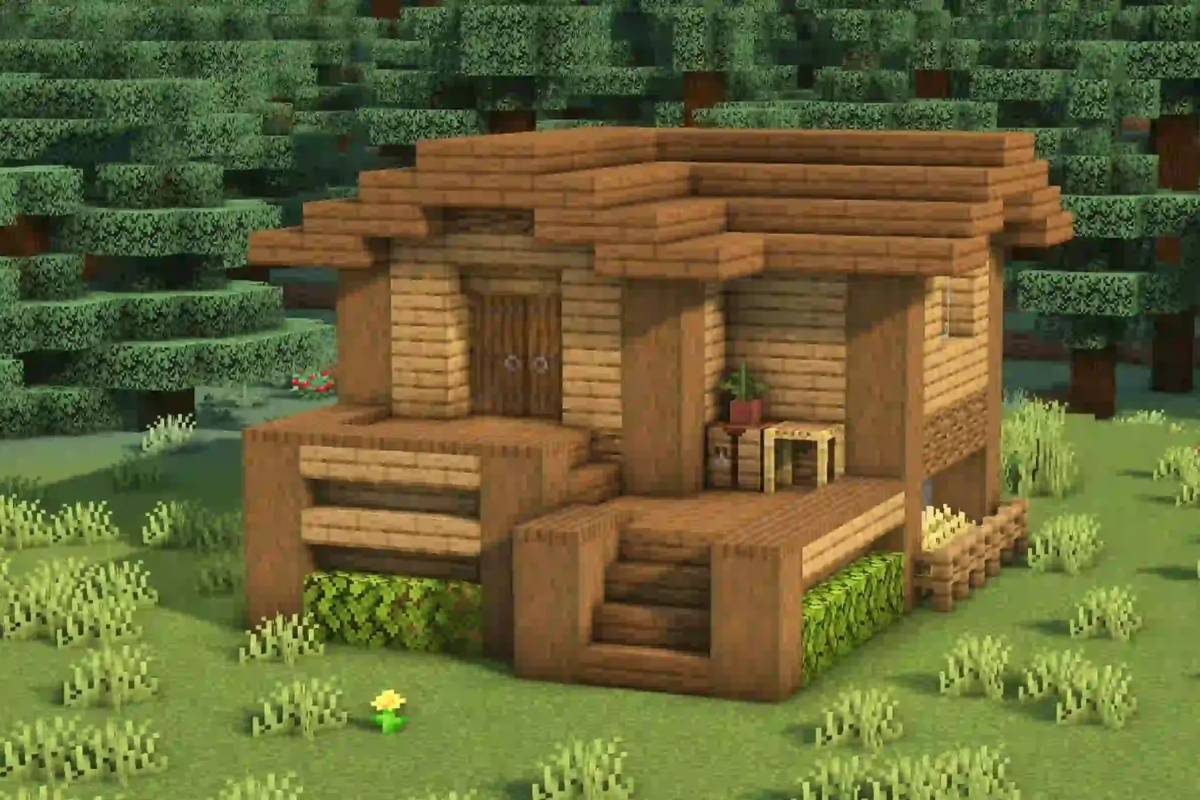Who would have guessed that a blocky pixel placement game could turn into, well, essentially, an architecture school? In 2025, however, we are witnessing millions of players use YouTube tutorials to go from being naive “noobs” to becoming digital architects.
The figures provide a narrative. One that, when you think about it, is really rather amazing.
The Revolution in Tutorials That No One Foresaw
Building was essential to survival in the early days of Minecraft. Four walls—and, if you were feeling particularly ambitious, a roof. Today? In their free time, players build medieval cathedrals and talk casually about Gothic buttresses.
The ecosystem of tutorials has completely exploded. From simple block palettes to sophisticated interior design, content creators have created in-depth guides that span almost an hour. These videos are now authentic educational content rather than just gaming videos.
In the community, “The Ultimate Guide to Building in Minecraft” has become a catchphrase. Players treat these materials with the same respect that architecture students do their design manuals, sharing them as though they were textbooks.
The Movement’s Masters
Creators who have effectively turned into virtual professors dominate the tutorial market. Grian is in the lead because of his experience in architecture. His method goes beyond straightforward “place block here” directions; instead, he explains why specific design decisions are effective.
BdoubleO100 has established himself as a specialist in fantasy and medieval builds. He simplifies intricate structures into digestible lessons in his “Building with BdoubleO” series. His tutorials are more akin to attending a master class on proportion and detail work than they are to watching video games.
Terraforming knowledge is brought to the table by GoodTimesWithScar. Players learn that building encompasses much more than just individual structures from his custom terrain work, which includes rivers, mountains, and entire ecosystems.
Nor is the younger generation slowing down. With 2025’s newest tools and mods, creators are pushing the envelope and demonstrating how Axiom and other cutting-edge building tools can completely transform the building process.
The Learning Curve: A Forecasted Development
From novice to expert, the majority of builders take a surprisingly uniform route. Really, it’s similar to watching someone learn any craft.
Phase One: The Survival Shuffle
New players only think about avoiding death. Their physiques? purely practical. A door-equipped box. If they’re feeling fancy, perhaps some windows.
Phase Two: Adhering to the Tutorial
When players find YouTube guides, it’s a game-changer. Block by block, they begin copying builds, picking up fundamental skills like comprehending scale relationships and using stairs to add depth.
Phase Three: Exploration of Style
Gamers start experimenting with various architectural designs. They learn defensive design from medieval castles. Clean lines and minimalism are introduced in modern homes. Japanese temples exhibit symmetry and cultural design features.
Phase Four: Initial Development
The magic occurs here. Gamers begin making their own designs instead of blindly adhering to tutorials. They have enough internalized values to confidently take on their own projects.
Phase Five: Teaching Others
Eventually, a lot of advanced builders produce their own instructional materials. When former students teach and pass on their knowledge to the next generation, the cycle is complete.
The Instruments That Revolutionized Everything
Vanilla gameplay is just one aspect of modern Minecraft construction. An entire industry of tools and modifications that significantly improve the building experience has been born out of the tutorial ecosystem.
Large-scale construction has been transformed by Axiom. Block placement that used to take weeks can now be completed in a matter of hours. Although there is a steep learning curve, tutorial developers are already creating guides to assist players in becoming proficient with these sophisticated tools.
For copying structures and manipulating terrain, WorldEdit is still necessary. Litematica makes real architects envious by assisting builders in precisely following intricate blueprints.
Simple block structures are transformed into photorealistic architectural photography through visual enhancements using OptiFine and shader packs. The community’s standards for “good building” have increased as a result of these tools.
The Unexpected Educational Impact
Instructors have begun integrating Minecraft into STEM courses. While students believe they are only playing a game, the building tutorials organically cover mathematical concepts like geometry, proportion, and spatial reasoning.
The transfer of skills is strikingly authentic. Students studying architecture attribute their increased capacity for three-dimensional thought to their exposure to Minecraft tutorials. Students with gaming backgrounds frequently perform exceptionally well on spatial visualization exercises, according to interior design programs.
This ecosystem even fosters the development of soft skills. Effective tutorial developers must be able to:
- Clearly explain difficult concepts
- Divide large projects into smaller, more manageable tasks
- Constructively address community criticism
Creating Cross-Border Communities
Within gaming, the tutorial phenomenon has given rise to a distinct subculture. Building contests such as “Build Battle” highlight abilities acquired through tutorials. Global builders come together on servers devoted to cooperative construction projects.
When builders use time-lapse videos and screenshots to communicate, language barriers are broken down. Real cultural exchange through digital architecture can result from a Japanese player being inspired to try their own interpretation of a medieval cathedral tutorial made by a German builder.
The community has created its own trends and aesthetics:
- Cozy, rustic “Cottagecore” buildings have become extremely popular in recent years
- The stark, geometric concrete structures that players explored in Minecraft gave rise to “brutalist” architecture
The Company That Owns the Blocks
This is no longer merely hobby content. Prominent tutorial creators make good money from sponsorships, ad sales, and merchandise sales. The financial incentive has significantly improved the quality of the content.
Professional editing, unique graphics that clarify difficult ideas, and even music scores that have been commissioned are all features of contemporary tutorials. The production value is on par with or occasionally better than traditional educational content.
Microsoft has fully embraced this trend since acquiring Minecraft in 2014. The game is specifically marketed as a learning tool in the company’s Education Edition, which collaborates with multiple tutorial creators to produce official educational content.
Difficulties in the Online Classroom
This blocky paradise isn’t flawless. Numerous persistent problems in the tutorial ecosystem are indicative of larger problems in online learning.
Problems with Quality Control
The quality of the thousands of tutorials that are uploaded every day varies greatly. Novices may adhere to badly constructed builds, possibly picking up ineffective methods that require later adjustment.
Attribution and Plagiarism
Intellectual property issues naturally come up as tutorials get more complex. At what point does inspiration turn into imitation? Although the community uses informal attribution standards to self-police to a large extent, disagreements still arise.
Screen Time Issues
The time commitment is a concern for parents and educators. For any learner, a single castle tutorial could require more than twenty hours of concentrated building time.
Barriers to Accessibility
Players with specific learning disabilities or visual impairments may find the game’s visual complexity difficult to handle. Barriers still exist despite the community’s efforts to produce more accessible content.
Advanced Methods and Contemporary Approaches
Early players of Minecraft would be amazed at how advanced the tutorials are now. Advanced ideas like color theory, architectural proportion, and even urban planning principles are now taught by creators.
Color schemes, shapes, patterns, and sophisticated techniques that rival formal design education are covered in recent, thorough guides. It is truly astounding how much information is being freely shared on these platforms.
Texture work has developed into a kind of art. In order to produce realistic stone walls, weathered wood, and even abstract artistic effects that go beyond what is feasible given the limitations of the game, players learn to combine various block types.
Digital Architecture Education’s Future
There are no indications that this phenomenon will slow down in the near future. If anything, it’s breaking new ground that has the potential to completely change the way we think about education.
Incorporation of Virtual Reality
Even more immersive building experiences are available in early VR versions of Minecraft. VR-adapted tutorials could give students a new level of spatial awareness by letting them explore their creations while they’re being built.
Learning Assisted by AI
In the future, machine learning tools may be able to offer individualized building instruction that can scale to individual learning styles and skill levels in ways that human creators just cannot.
Expansion Across Platforms
Similar tutorial ecosystems and building mechanics are being used in other games. The next wave of user-generated educational content is represented by Roblox Studio and Fortnite Creative mode.
Integration in the Professional World
Some architectural firms have started visualizing their initial concepts using Minecraft. Because of the game’s user-friendly design language, they’ve found that clients frequently comprehend blocky prototypes more easily than traditional blueprints.
The Unexpected Revolution in Education
The implications of this phenomenon for education in general may be its most important feature. People will pursue extremely complex learning if it is interesting, voluntary, and immediately applicable to something they care about, as shown by Minecraft building tutorials.
The achievement calls into question long-held beliefs about the best ways to teach technical skills. These tutorials demonstrate that for many students, peer-to-peer learning, iterative practice, and creative expression can be more beneficial than traditional classroom instruction.
In order to facilitate this learning ecosystem, platforms have developed that offer thousands of blueprints and structures that prospective builders can use as inspiration and educational resources.
Beyond Amusement: Practical Life Skills
It’s important to think about the implications for education in the future as we observe 10-year-olds discussing flying buttresses and load distribution in passing while constructing Gothic cathedrals. These young builders are gaining problem-solving abilities, aesthetic appreciation, and spatial reasoning that go well beyond any one game.
The people who created the tutorials are now unintentional teachers. Building tutorials and coding instructions are combined in popular channels. Epic builds impart world editing skills that straddle the line between environmental design and custom terrain work.
It remains to be seen if this phenomenon will radically alter our perspective on education. However, one thing is for sure: a generation of young people is growing up with an intuitive understanding of architectural principles that they learned from YouTube tutorials about virtual block placement rather than textbooks.
Maybe show someone a 12-year-old’s pixel-perfect recreation of the Parthenon, complete with precise Doric columns and appropriate proportional relationships, the next time someone dismisses video games as “just entertainment.”
After that, ask them to clarify how that isn’t education.
Sincerely? The most effective learning frequently takes place when we are completely unaware that we are learning.
















